9 Ways You’re Inviting Snakes to Bite You

Snakes are still relatively misunderstood animals despite how closely we often live alongside them. After all, the generally shy creatures would rather hide away than torment their human neighbors. But every so often, you’ll cross paths with them when you least expect it, whether that’s out in nature, in your yard, or even in your own home. Thankfully, with the right preparation, you can avoid the worst kind of run-in with a reptile. Read on to find out how you might be inviting snakes to bite you, and what you should be doing differently.
READ THIS NEXT: Invasive 200-Pound Pythons Are Spreading in the U.S.—And Eradication “Is Not Possible”.
9 Ways You’re Inviting Snakes to Bite You
1. Hiking off-trail or in rocky areas

There’s no better way to take in nature than lacing up your boots and heading out hiking. Most outdoors enthusiasts have their favorite trails that can range from flat and easy to hilly and complex. But if you’re the kind of hiker who wants to forge their own path, you might be putting yourself at a higher risk of a snake bite.
“Snakes like to hide in tall grass, rocky areas, or anywhere that has plenty of space to take cover,” says Georgina Ushi Phillips, DVM, advising veterinarian and writer for The Reptile Room. “Even when trying to soak up the sun, snakes are more likely to be found in an area away from the trail than in the middle of the path. That means walking off the trail, as tempting as it can be, is a great way to increase your risk of a snake bite.”
2. Choosing the wrong footwear
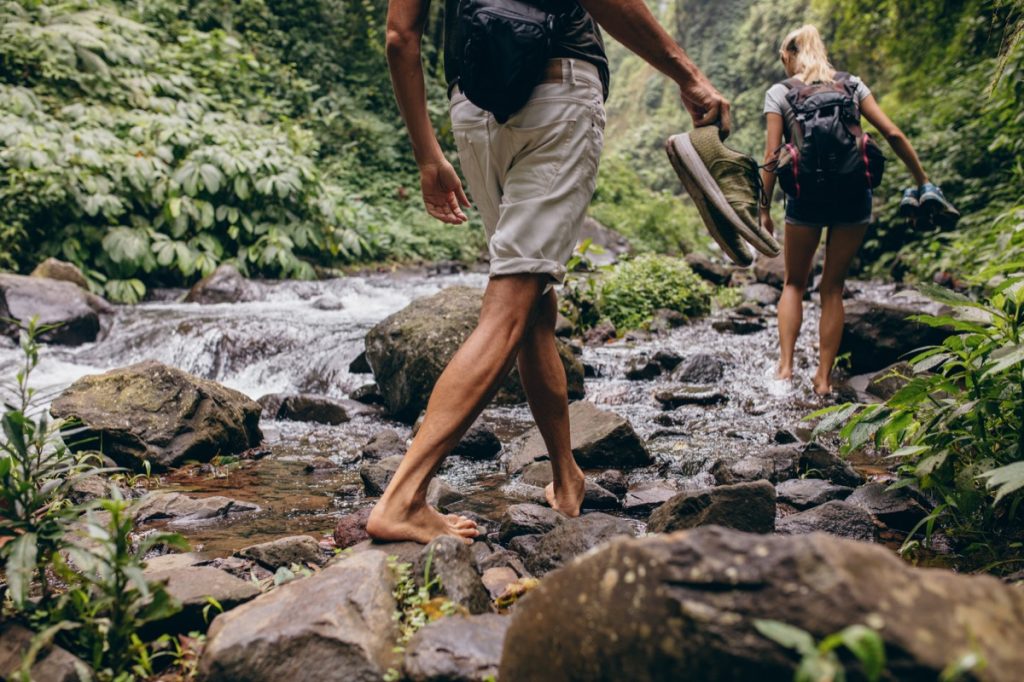
Sometimes, it’s too hard to resist the temptation to wear as much light clothing as possible when you’re headed outside—especially in warmer weather. And it’s not just t-shirts and shorts: Many love letting their feet breathe with open shoes and sandals when they go to the beach or head into nature. Unfortunately, this can be a huge mistake if you’re heading someplace where reptiles are a factor.
“One of the most common ways people invite snakes to bite them is by wearing sandals in snake territory,” says Jennifer Mecham, a snake expert and writer with Reptiles Blog. “This might not seem like a big deal, but it’s a very foolish thing to do. Sandals offer very little protection against a snake’s fangs, and even if you manage to avoid getting bitten, you’re still risking exposure to snake venom.”
3. Gardening carelessly

In addition to your feet, your hands can be susceptible to snake bites, especially when you’re gardening.
Roger Dickens, technical bird and wildlife control expert with Ehrlich Pest Control, previously told Best Life that he advises people who are gardening or landscaping to look closely at any low-lying areas before they reach down.
And since snakes may be camouflaged among leaves and plants, he also recommends “using a long pole such as an old broom handle to lift low-hanging vegetation like leaves or flowers to keep a safe distance from potential snake hazards.”
Of course, make sure your feet and ankles are covered with shoes and socks, and wear gardening gloves to protect your hands.
READ THIS NEXT: 9 Ways to Snake-Proof Your Yard, According to Experts.
4. Being careless with pet snakes
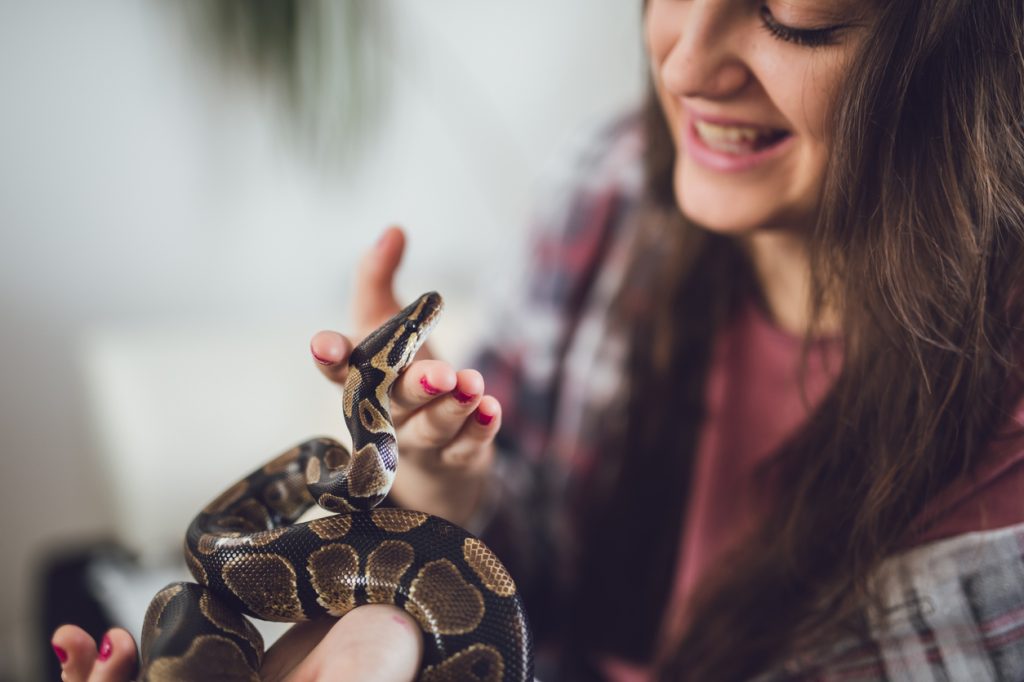
It’s not just wild snakes that can bite you: Even domesticated pets can sometimes unexpectedly take a turn. That’s why experts say you should remember a few things if someone ever hands you a snake.
“While it’s rare for a pet snake to bite, a hungry snake is definitely an exception. Never handle your snake when they’re hungry or around mealtime,” warns Phillips.
And even the hint of food can become a problem. “Snakes are very instinctive, and if your hands smell like food, then even the friendliest pet snake may be driven to bite. That’s why it’s important to always keep your hands clean before handling one,” Phillips explains.
5. Not watching your step
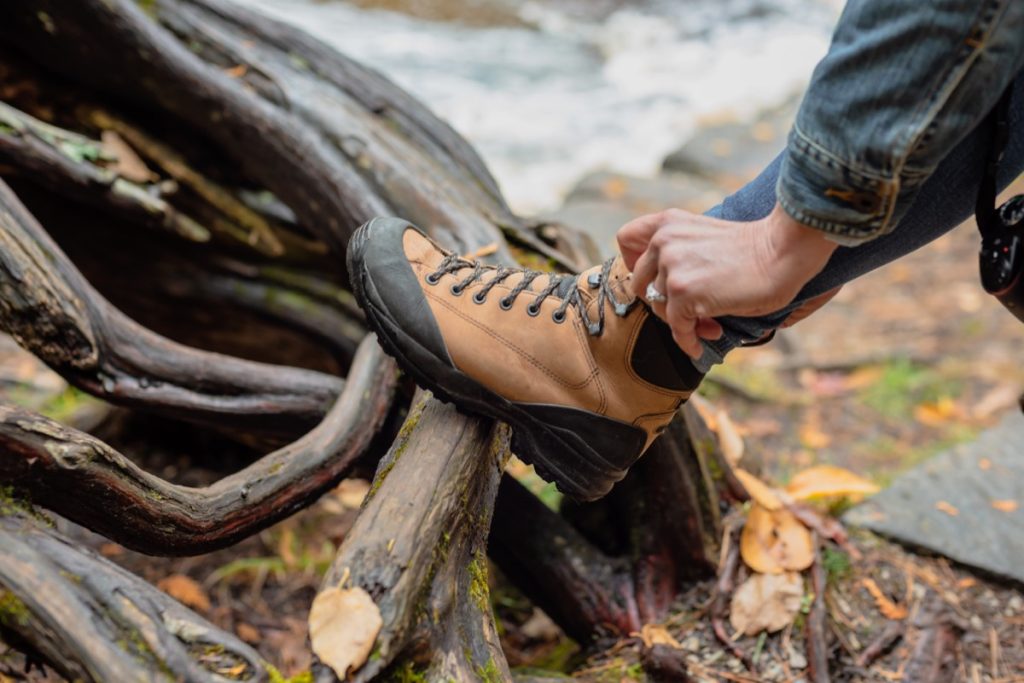
It can be hard to make out a camouflaged animal hiding in leaves, rocks, or tall grass—which is why one of the most common accidental encounters people can have with snakes usually involves not keeping an eye on where you’re putting your feet.
“Most snakes are not aggressive by nature and would much rather avoid confrontation,” says Mecham. “When you step on a snake, you are putting the animal in a defensive position. They’ll strike out to protect themselves, and you will be the one who pays the price.”
Fortunately, you can do a few things to avoid trampling an unsuspecting reptile. “First, be aware of your surroundings. If you are in an area where snakes are known to live, take extra care to watch where you step,” Mecham says. “Second, wear long pants and boots when hiking or working in areas where they may be present. This will help protect your skin if you step on a snake.”
And if you still find yourself in the unlucky position of stepping on a snake, Mecham says the best thing to do is remain calm. “Do not try to pull away from the snake or kill it. These actions will only increase the likelihood of being bitten. Instead, slowly back away from the snake and allow it to retreat. Then, seek medical attention immediately.”
For more snake advice delivered straight to your inbox, sign up for our daily newsletter.
6. Spending time outdoors during snake season

Those first days when the weather warms up make the idea of heading outdoors practically irresistible. But as cold-blooded animals, experts say snakes have a very similar tendency to become more active as the mercury rises.
“March through October are when snakes are usually most active, but more specifically, it’s temperatures between 80 and 90 degrees Fahrenheit that are most attractive to snakes,” says Phillips. “Of course, these are also usually the best times to hike, but you still reduce the risk of a snake bite by being extra cautious during these times.”
7. Getting too close
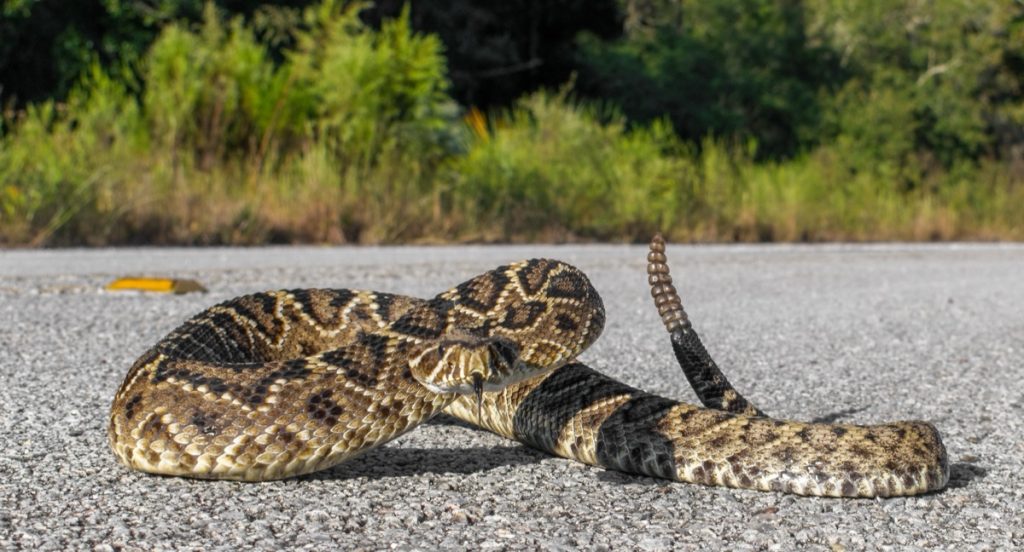
Whether you’re afraid of them or not, snakes are a fascinating part of nature and can be compelling to watch. But while it might seem like common sense, inching anywhere closer to a reptile you’ve happened upon could be riskier than you realize.
“It can be exciting to see a snake, and some folks will be tempted to move in for a closer look or even a picture. But not only is a snake likely to see your encroachment as a threat, it’s easy to underestimate just how far a snake can strike,” Phillips warns.
“While it can vary by species, most snakes can strike about half their own body length,” Phillips adds. “Even with that rule of thumb, it can be very difficult to see how long a snake really is and accurately gauge striking range, so it’s best to keep your distance.”
It can be even worse if you attempt to become aggressive yourself. “When you try to kill a snake, it will feel threatened and more likely to bite you as that’s its only defense mechanism. Their bites are their last resort, and they will only use them when in danger,” says Mecham.
READ THIS NEXT: The No. 1 Way to Keep Snakes From Getting in Through Your Toilet.
8. Keeping a messy yard
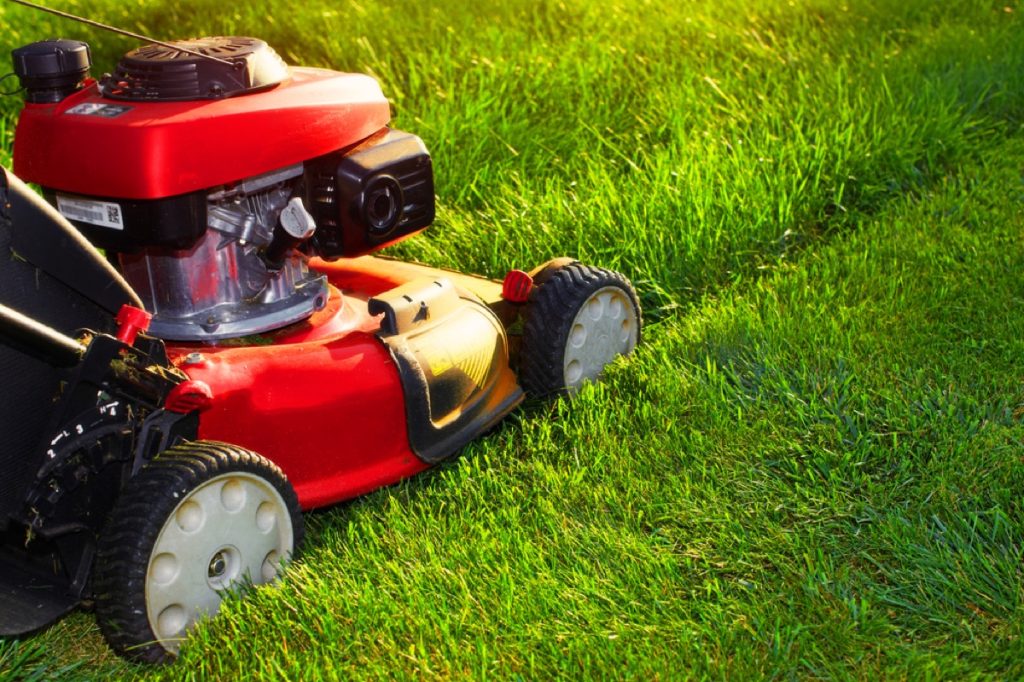
Even if you’re not an avid outdoors enthusiast, there’s a good chance you spend at least a little time in nature in your own yard. But just because you live there doesn’t mean the risk of a snake encounter is any less. And according to experts, there are a few ways to make sure your odds go even lower.
“When it comes to your property, snakes are attracted to two things: small prey that they can eat and great places to hide,” Phillips explains. “By removing debris, clutter, and other hiding spaces from your yard, you reduce the chances of attracting mice, rats, and other potential snake prey and reduce the number of hiding spots that snakes will want to call home.”
9. Not listening to your dog
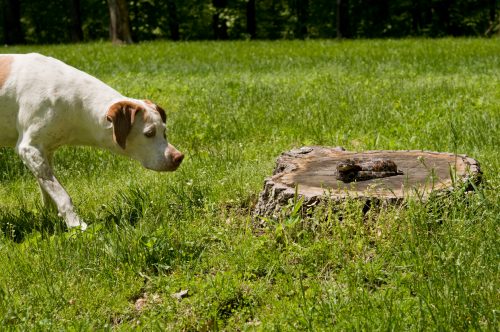
If you’re a dog owner, there’s a good chance you may bring your four-legged friend with you on walks, hikes, or even camping. And since they are just as susceptible to snake bites as you, it’s important to pay close attention to any signs that they’re distressed while outside.
“They may have heard the snake moving, smelled it, or seen it moving,” Dickens previously told Best Life. If you think this is the case, he advises holding your dog’s leash tightly and safely maneuvering away from the snake.